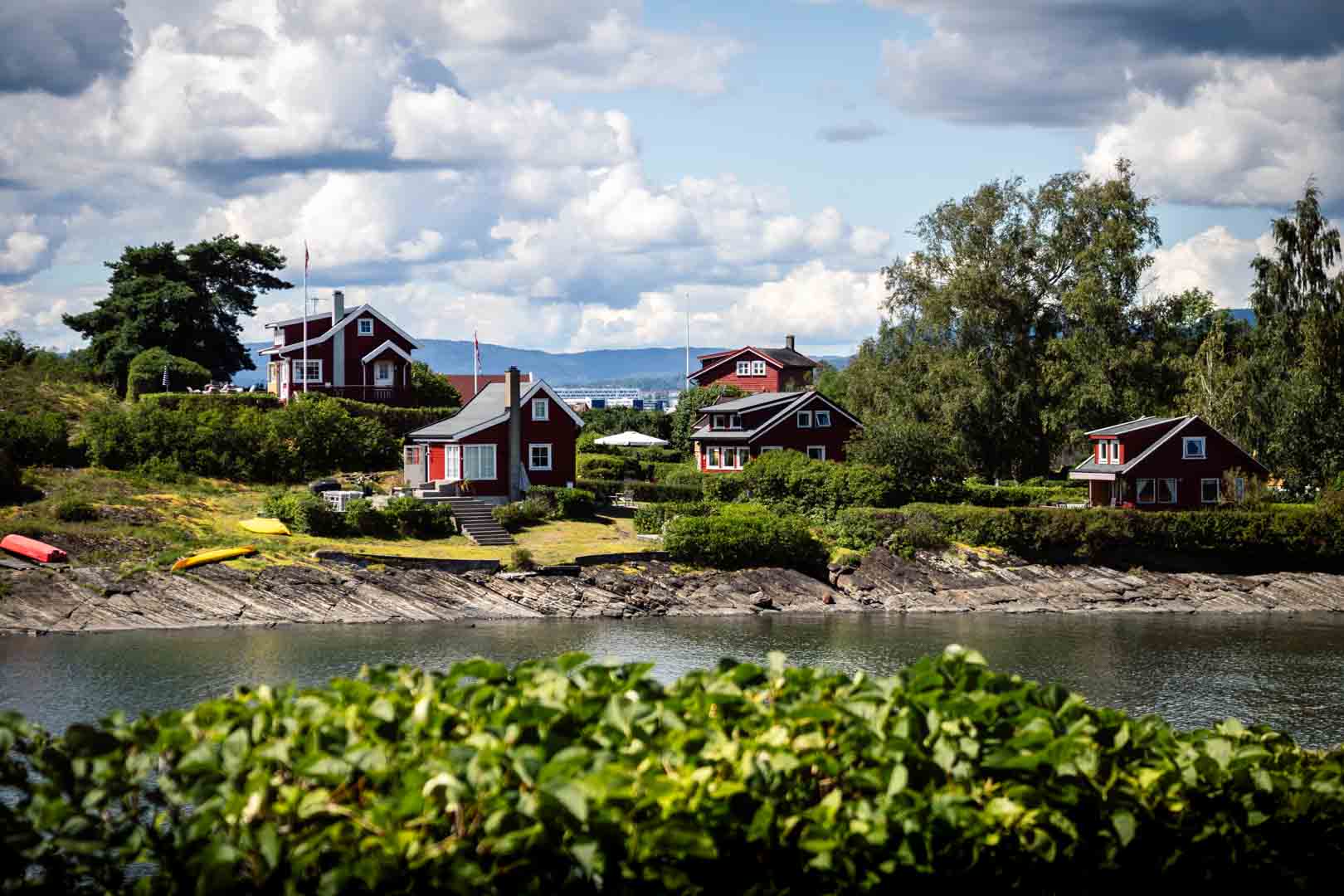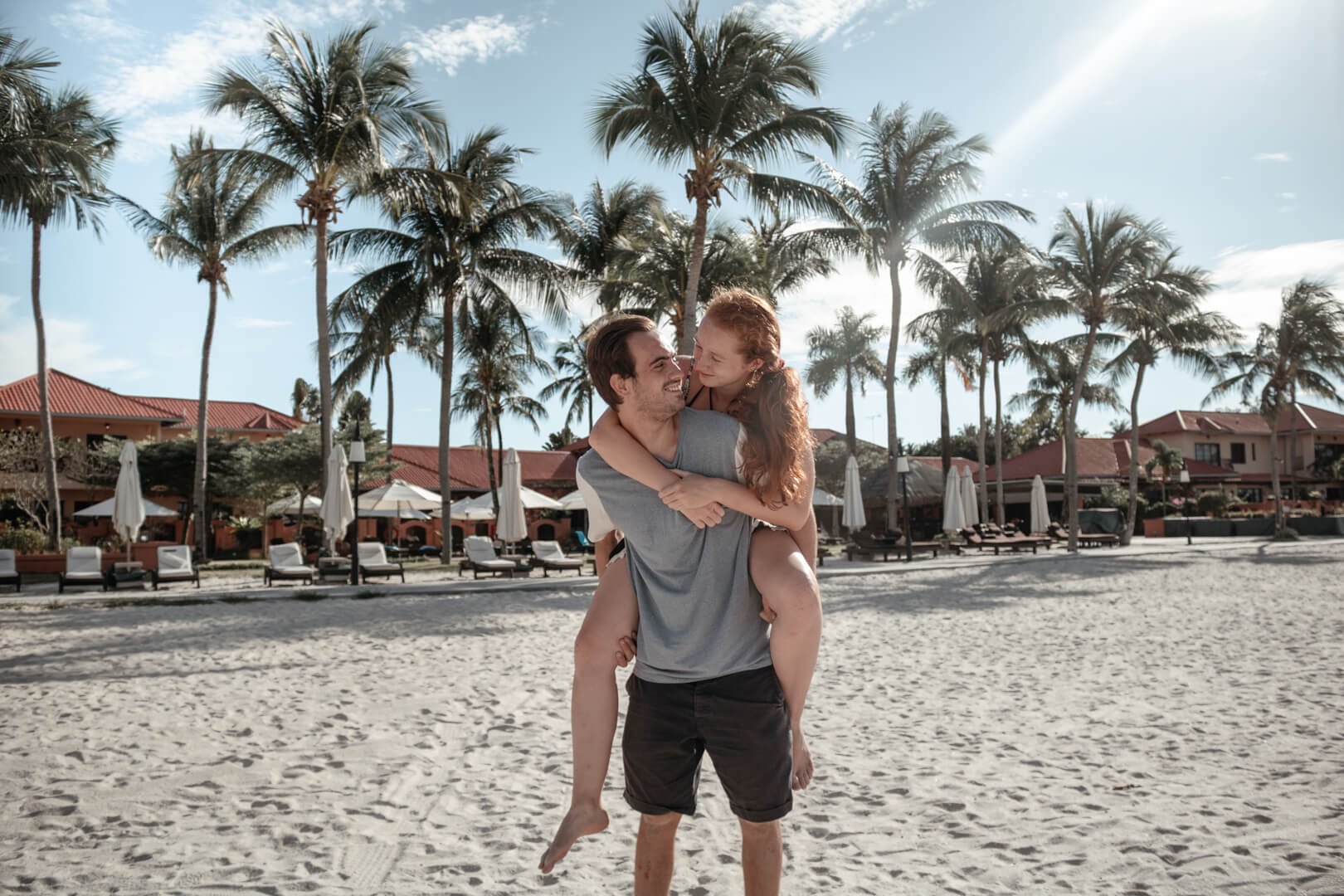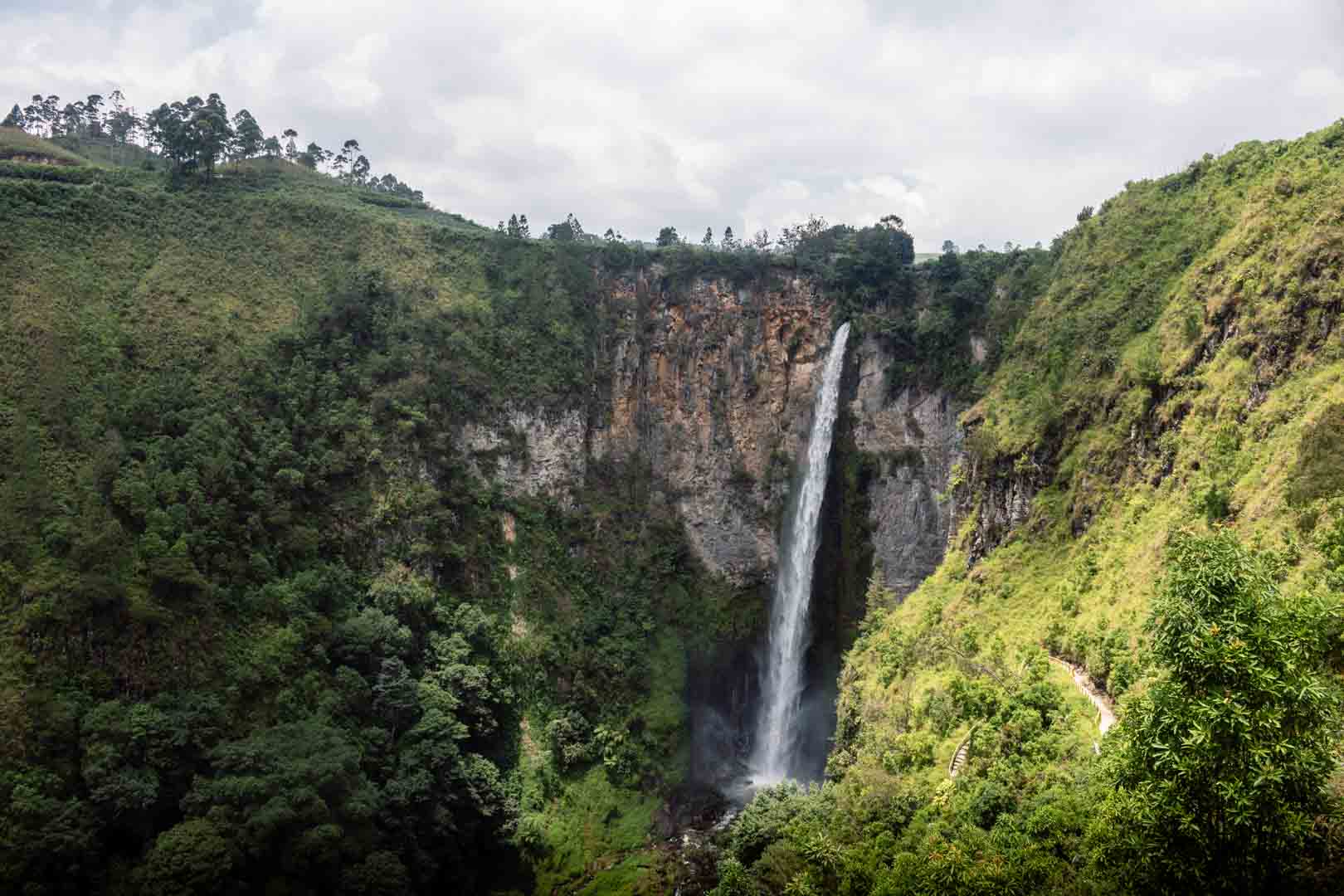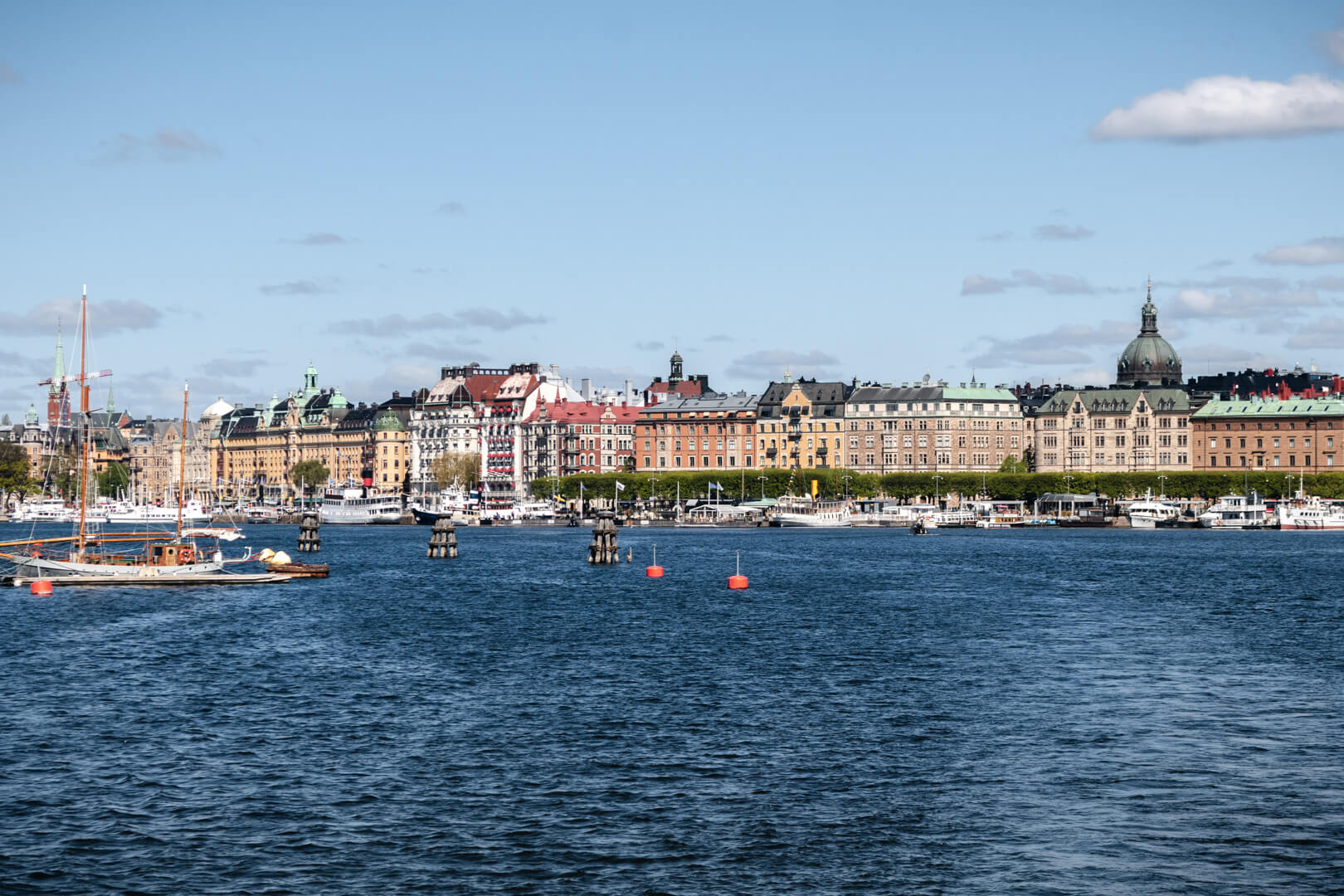Planning The Ultimate Oslo Fjord Day Trip: How To Get Around!
Last Updated: August 31 2024
Oslo, Norway’s capital, is a fascinating city, filled with many things to do, stunning architecture, and out-of-this-world cuisine. However, it was the Oslo Fjord that stole our hearts!
Therefore, if you’re visiting the city, you have to plan an Oslo Fjord day trip and today, we’re here to help!
The Oslo Fjord, also known as the Oslofjorden is a large inlet in south-east Norway that stretches for approximately 100 km (62 miles) and leads to the Baltic Sea. There are six main islands to explore, all of which offer scenic views, hiking trails, and swimming spots.
In this blog post, we’ll show you how to get around the fjord, where to visit, and all the different things you can do!
Some posts on this site contain affiliate links. If you buy or book something through these links, we earn a small commission, but at no extra cost to you! If you want to learn more, you can take a look at our privacy policy!
Why Should You Take an Oslo Fjord Day Trip?

So, why should you head out on an Oslo Fjord trip? To be honest with you, the answer to that question should be why wouldn’t you? The Oslo Fjord is spectacular and it’s perfect for anyone who loves the great outdoors!
In the Oslo Fjord, you’ll come across idyllic landscapes, charming small towns, beautiful beaches, interesting landmarks, and so much more. The islands in the fjord also offer a tranquil escape from the city.
There’s a huge variety of hiking trails to walk, several stunning swimming spots, and best of all, you can easily reach the fjord directly from Oslo. If you’re lucky, you might even spot some of the local wildlife, which includes white-tailed eagles.
Another reason to visit Oslofjorden is because it’s so easy to get around. You can easily visit five or six islands in one day self-guided or on a sailing tour.
How to Get Around the Oslo Fjord
Self-guided

In our opinion, the most enjoyable way to explore the Oslo Fjord is self-guided because you have much more flexibility. By visiting the fjord on your own accord, you can decide exactly where to go, what to do, how much to spend, and how long your day is.
If you decide to visit the fjord self-guided, we recommend choosing three or four different islands to explore and several things you want to see or do. Then, you can look for the ferry that best suits your itinerary.
You’ll be pleased to hear that an Oslo Fjord trip like this is super easy because ferry services run every 10 to 15 minutes between each island. As well as our self-guided day trip, we also headed out on a boat tour from Oslo. However, we much preferred the freedom and relaxed nature of the self-guided experience.
The Ferry Ticket
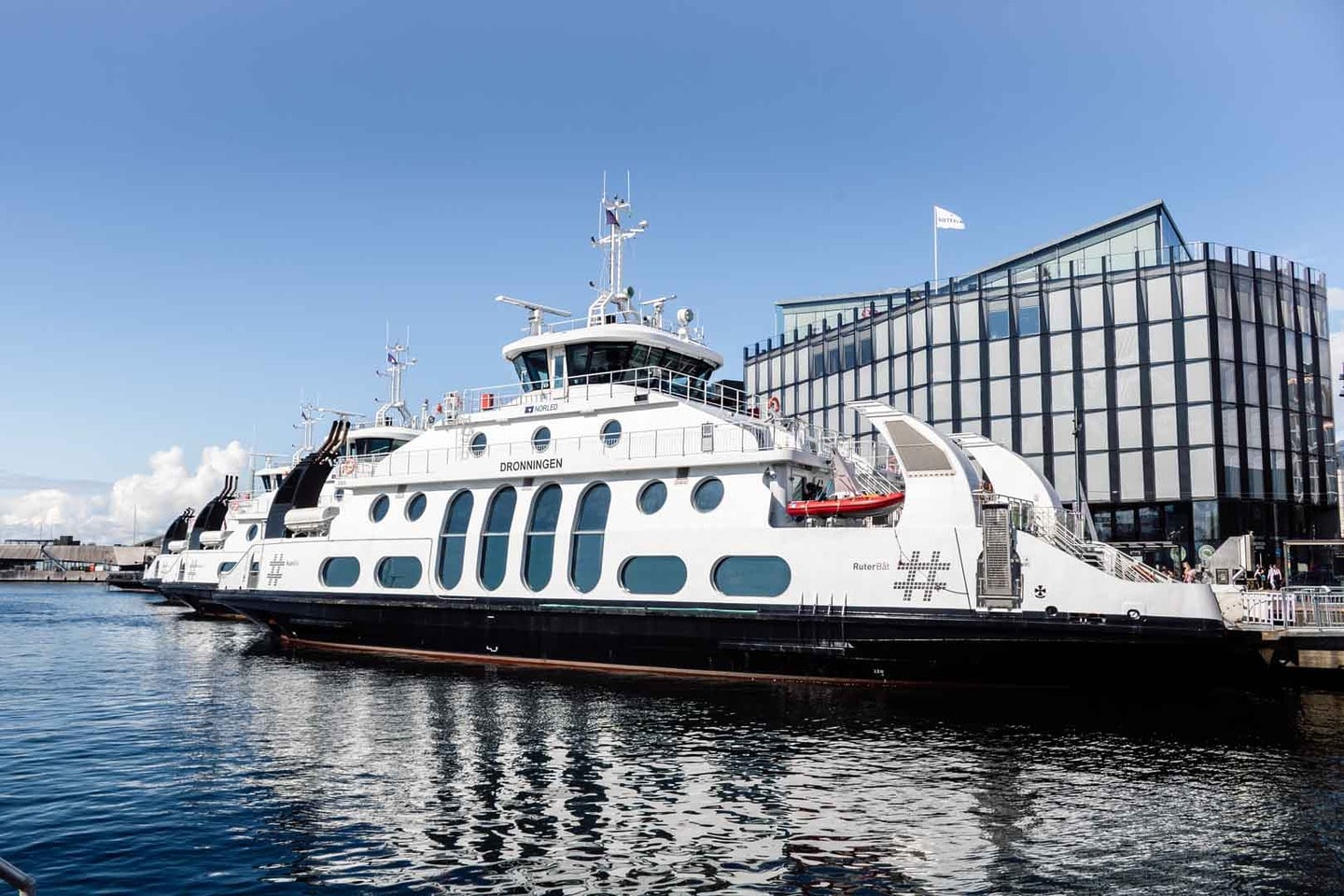
The ferries for Oslo Fjord leave the city from Rådhusbrygge 1 (City Hall Pier 1) and Aker Brygge, and they travel all over the fjord, some even travelling as far as Copenhagen. Most ferries stick to a loop that includes stops at the most popular islands.
This makes it much easier to plan an island-hopping day trip. To book ferry tickets, we strongly recommend using the Ruter app!
We used this app to travel around the fjord and it was incredibly easy. We booked a day ticket that allowed us to jump on and off the ferries all day. Tickets cost approximately £9 and you can use any ferry route in the inner fjord.
We visited Hovedøya Island, Gressholmen Island, and Nakholmen and we didn’t have to wait more than 10 minutes for a ferry to the next island. We must say, the ferry rides themselves are quite beautiful too!
Boat tour
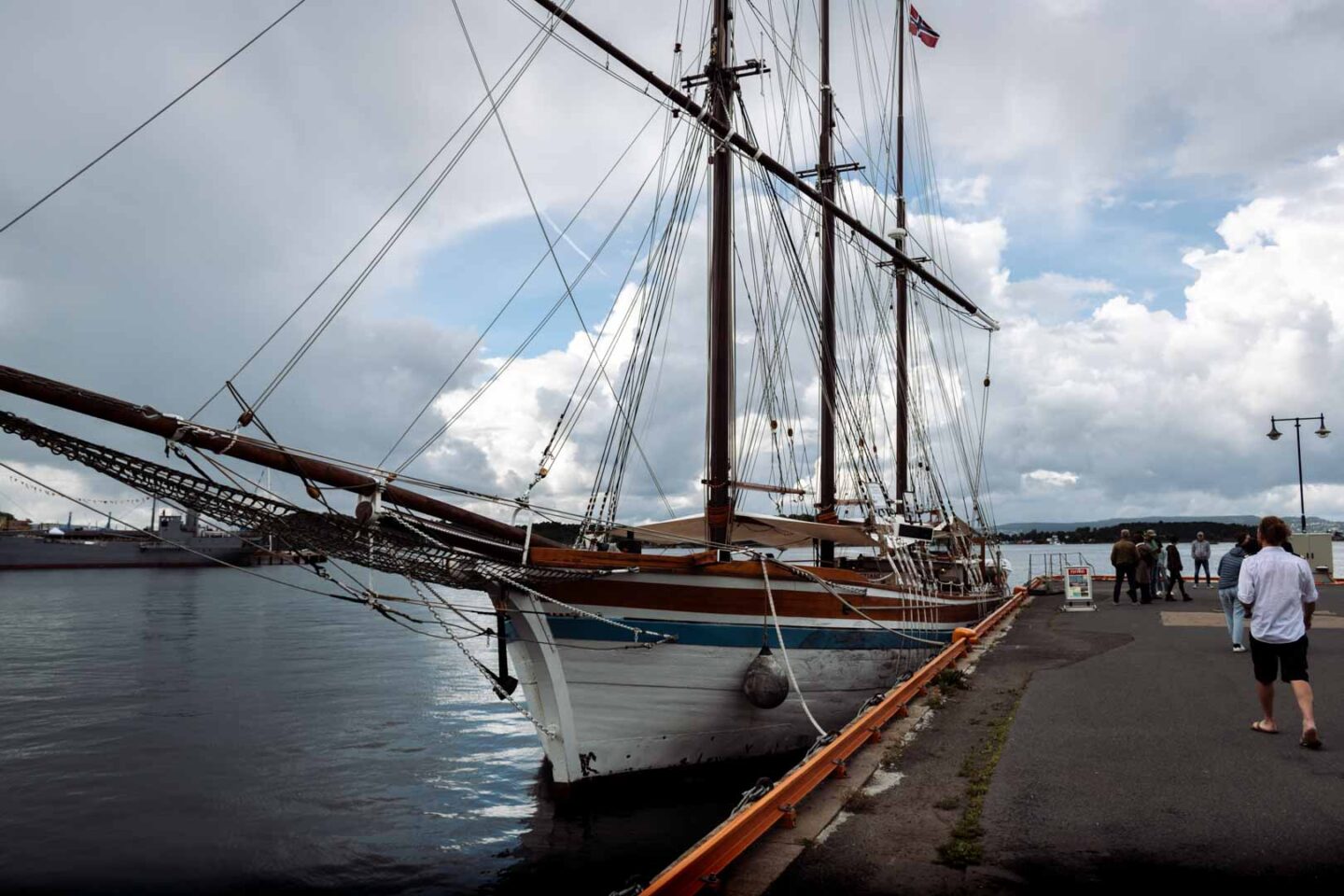
If you don’t want to plan your own trip around the Oslo Fjord, the other option is to book a boat tour. Oslo Fjord day trip tours provide a convenient way to explore the fjord without much planning.
Admittedly, boat tours cost more, but you’ll travel in style and most likely have a private tour guide. We went on a sailing ship tour and it included an audio guide that told us all about the different islands.
You could also buy food and drink from the onboard bar. Most fjord boat tours visit three or four different islands, but they don’t stop. Therefore, you won’t be able to look around each island.
If you want to see it all, try to do both. This is the Oslo Fjord tour we went for and we couldn’t recommend it enough. For other tours, check out our guide to the best fjord tours from Oslo!
The Main Islands of the Oslo Fjord
There are plenty of islands found within the Oslo Fjord and you won’t be able to visit them all in one day. We’ve brought together the most popular options below, to give you an idea of what each one has to offer. That way, you can plan your itinerary effectively!
Hovedøya island
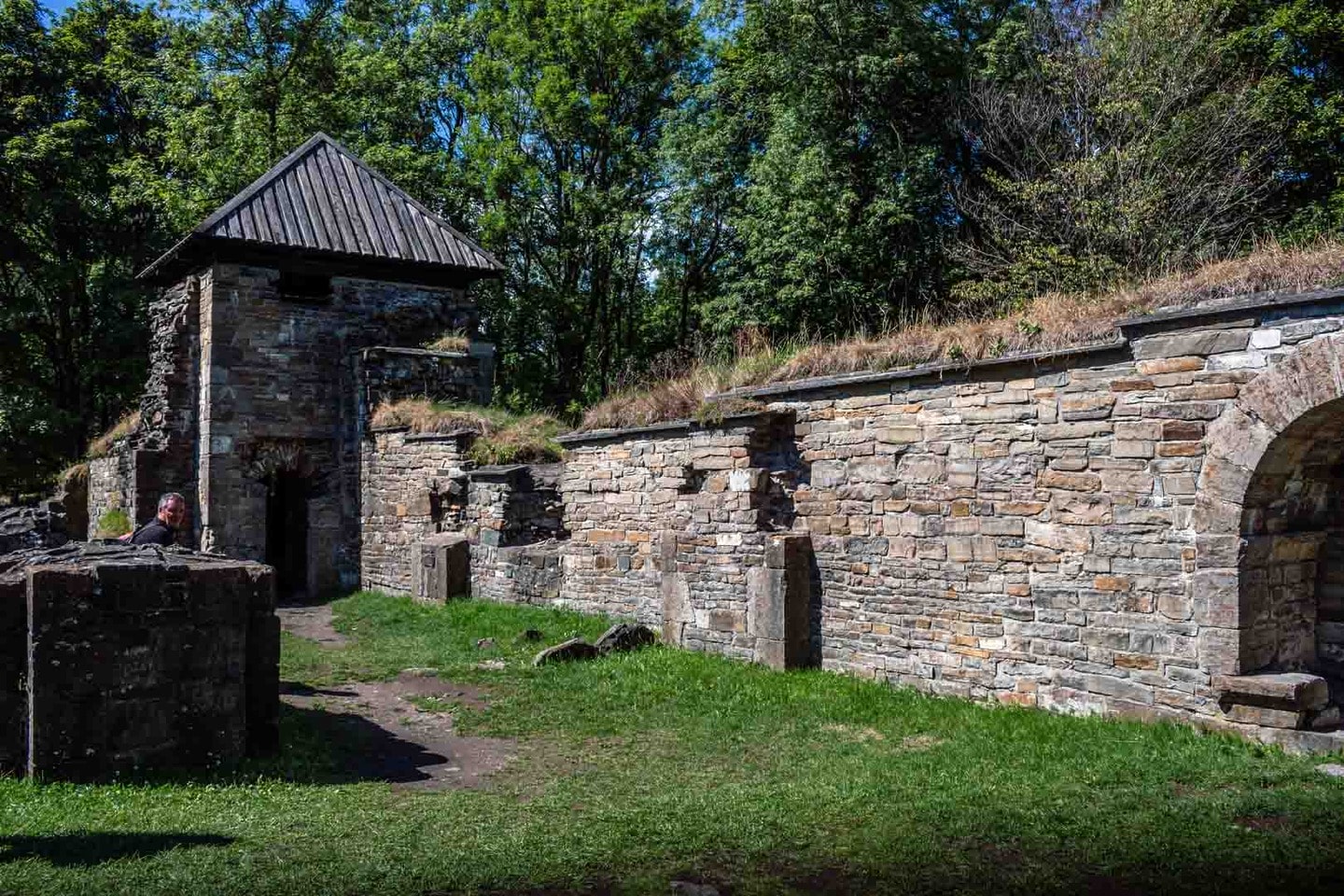
We’ll start with Hovedøya Island, which is the closest island to the city centre. Hovedøya is only small but it’s extremely popular, primarily because of its stunning beaches, lush forests, and interesting cultural heritage.
On this island, you can spend time wandering around the ruins of a 12th-century Cistercian monastery, hike through parts of the nature reserve, kick back at the beach, or swim in one of several picturesque swimming spots.
Hovedøya Island is also home to Klosterkroa café, where you can grab Skagen sandwiches, waffles, and prawns before jumping on the ferry to the next island.
Gressholmen
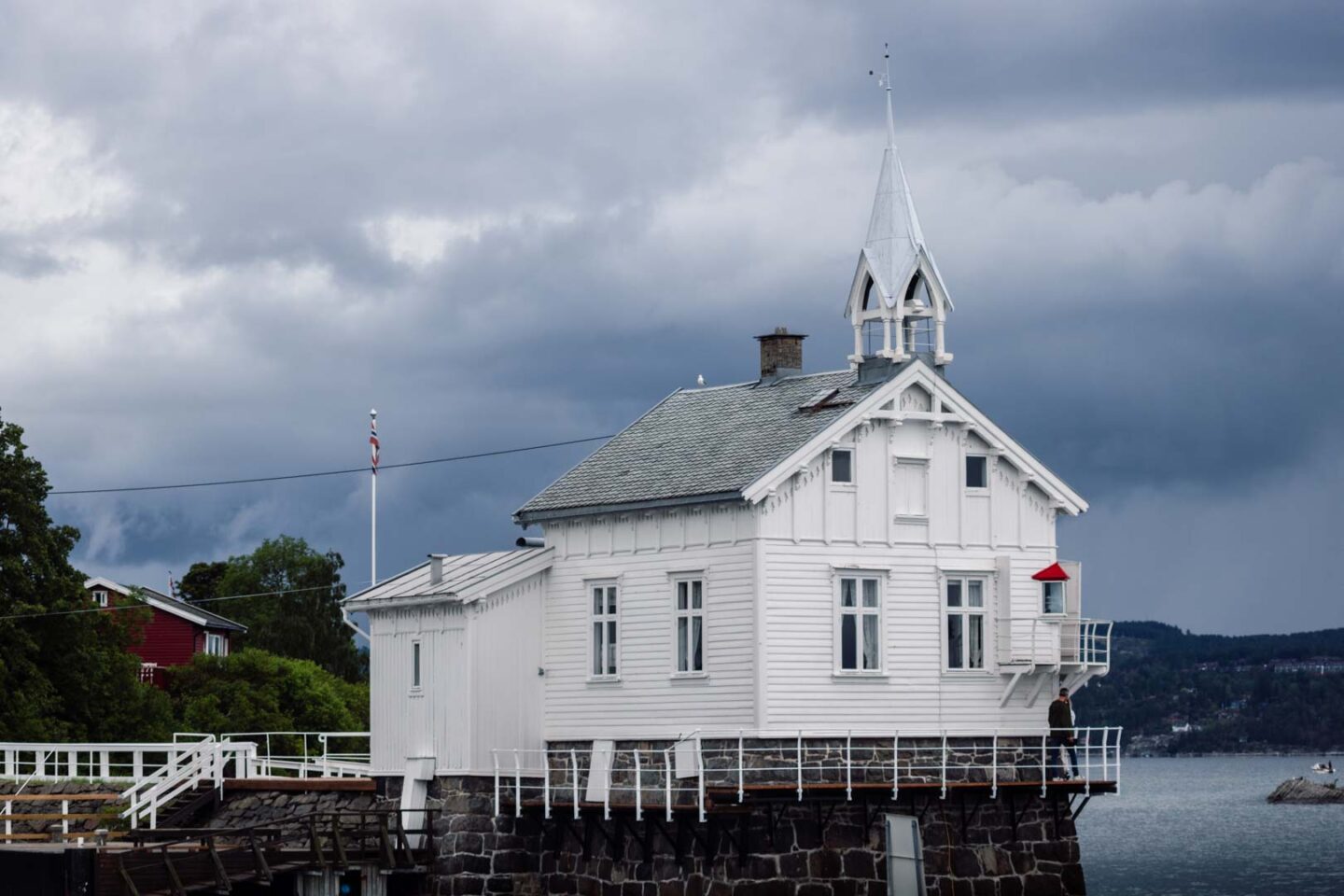
Approximately a 25-minute ferry ride away from Oslo, Gressholmen is an islet that connects three islands. Those islands are Heggholmen, Rambergøya, and of course Gressholmen.
Gressholmen offers excellent hiking, swimming, and sunbathing opportunities, and it’s home to one of the oldest lighthouses in the Oslo Fjord. We visited the three islands on our Oslo Fjord trip and enjoyed walking to the lighthouse before hiking along one of the nature trails.
We also stopped for a swim at Gressholmen because there are cubicles dotted around for you to get changed in.
Langøyene

If you’re looking for an island that offers a place to relax, unwind, and escape the hustle and bustle of the city, Langøyene ticks all the boxes. Langøyene is a seriously small island but it’s still well worth visiting.
Accessible all summer, this small island has a long white sand beach, a smaller nudist beach, a volleyball court, and a small shop. In our opinion, this island is a great place to sit and enjoy a picnic, swim in the sea, and soak up the sun!
Apart from that though, there isn’t much else to do on Langøyene.
Lindøya
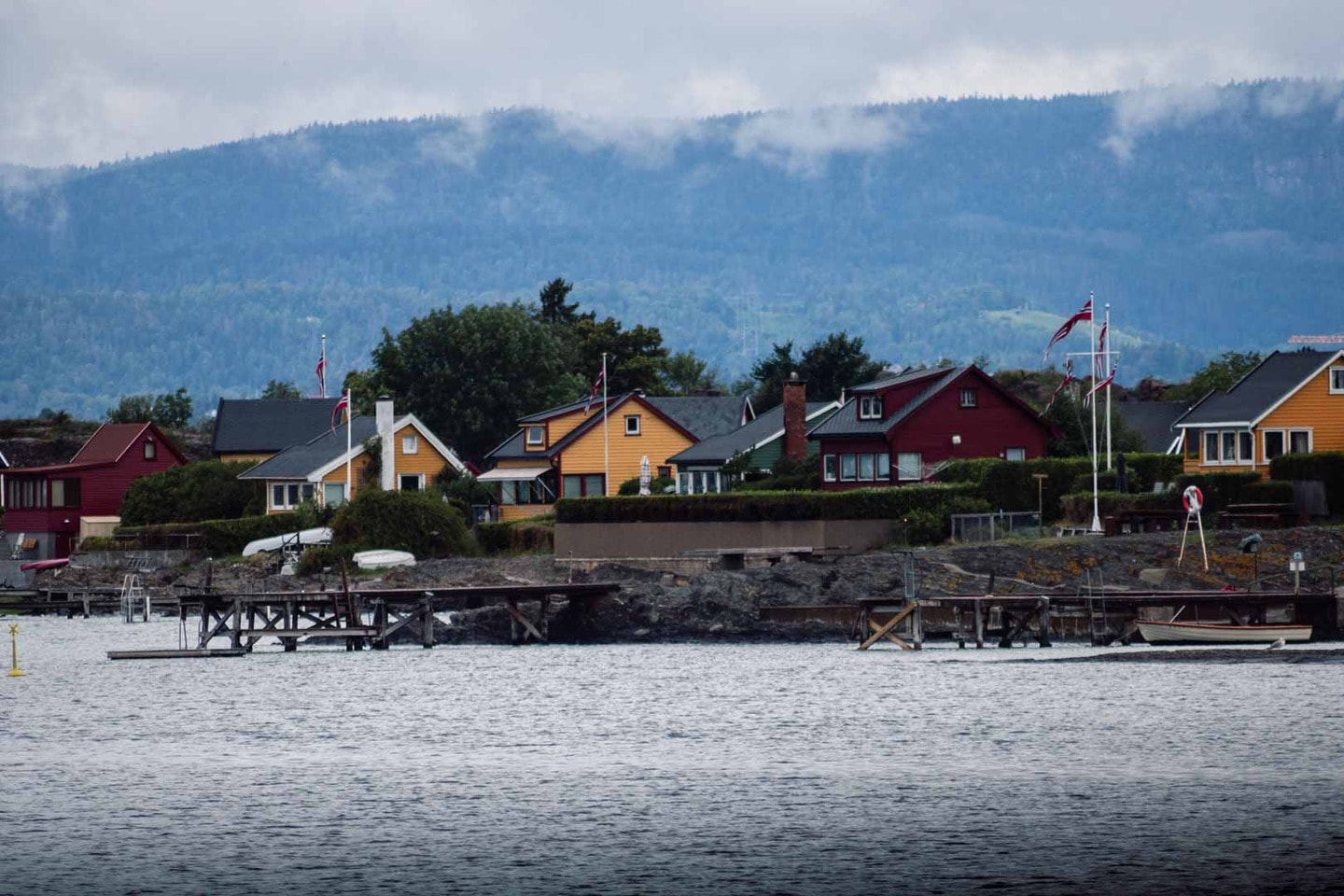
Lindøya is a larger island that features more than 300 summer cottages, a small shop, and a football field. This is a great island to visit if you want to see how people live in Oslo’s fjord.
The traditional Scandinavian cottages are what we love most about this island. They are bright red, yellow, and green and they all have vibrant gardens. We recommend simply walking around the island to see as many houses as you can!
After that, grab a drink and ice cream from the small shop and look out at the fjord from the beach.
Nakholmen

Nakholmen is a smaller cottage island that has approximately 200 private properties, aka summer cottages. Like Lindøya, the cottages on this island are also red, yellow, and green in colour.
You can walk around the island admiring the traditional properties before then having a walk around the small nature reserve, which can be found in the south. There isn’t a great deal to do in Nakholmen, but it’s certainly a peaceful place to enjoy some fresh air.
If you can, walk along the coast when exploring this island because the views of the fjord are spectacular.
Bleikøya
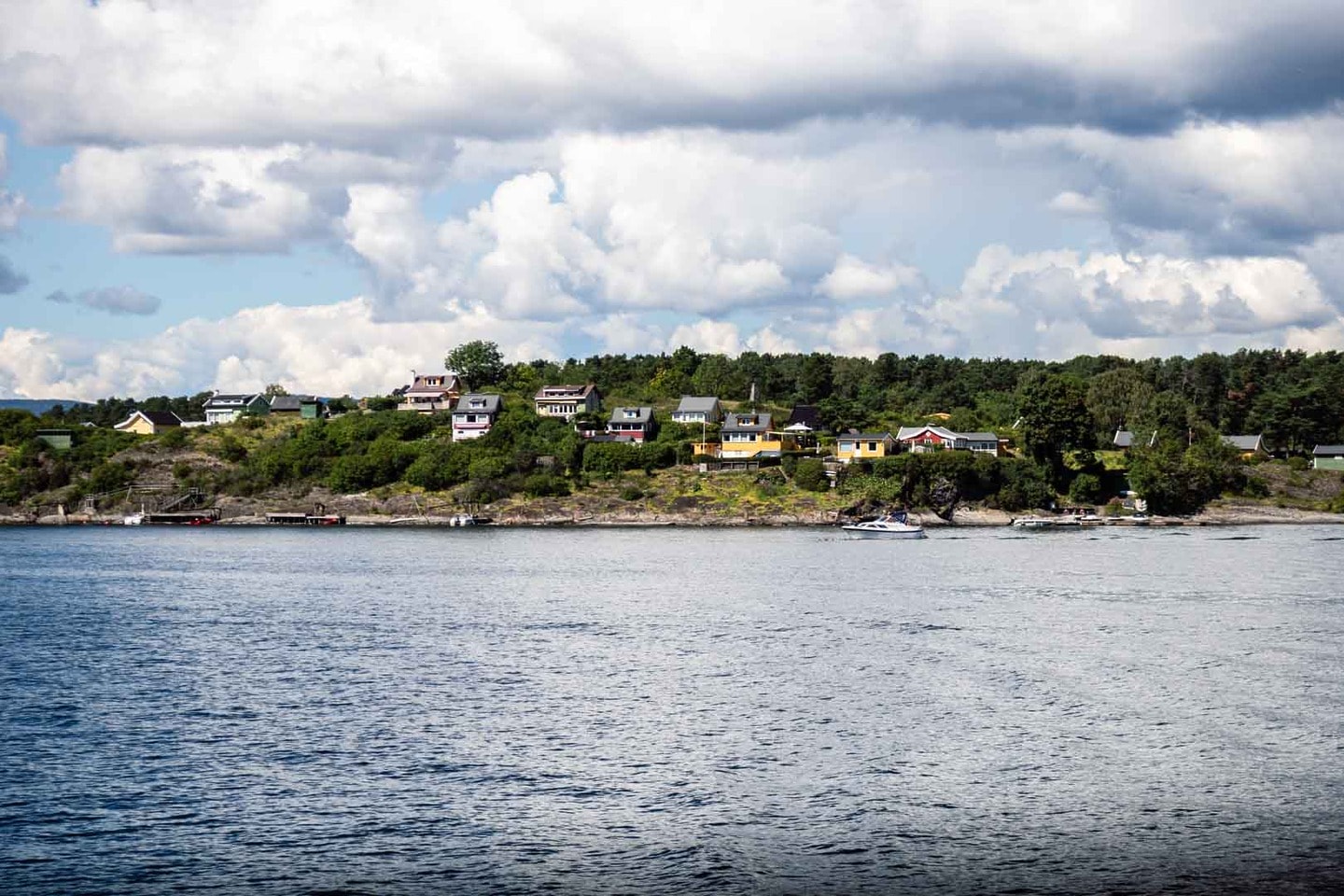
Finally, we have Bleikøya, which is arguably the best island you can visit in the Oslo Fjord if you want to spot wildlife. While this island is still better known for its summer cottages, it also has a large nesting area.
Found in Bleikøya Nature Reserve in the northern part of the island, the nesting area here is home to the Common Eider, the European Herring Gull, the Black-headed Gull, and other species of seabirds.
From the 19th century, Bleikøya also featured a sanatorium for children with chronic illnesses. You can still see the old building on the island today!
Things to do in the Oslofjord
1. Spend a day island-hopping
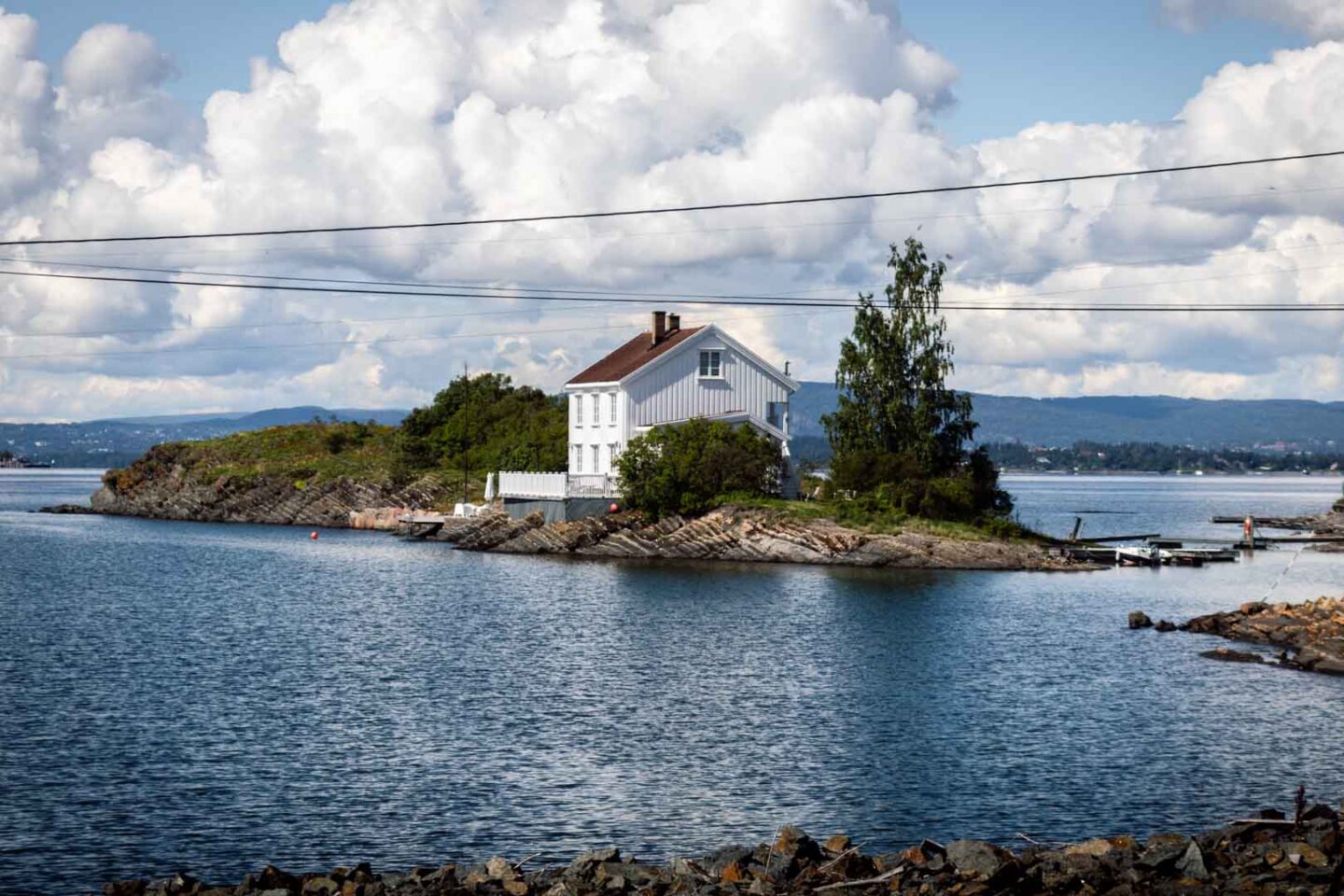
In our opinion, the best thing you can do in the Oslo Fjord is island hop. Island hopping is a surefire way to see the very best of the fjord in one day!
We recommend using the Oslo Fjord ferry to your advantage to easily travel between the most popular islands. During a one-day Oslo Fjord trip, you can visit at least three islands, if not more.
When we visited the fjords, we started at Gressholmen, before making our way to Hovedøya and Nakholmen. We spent approximately five hours exploring all three islands and that included having a picnic, swimming in the sea, and exploring the main landmarks.
2. Head out for a swim
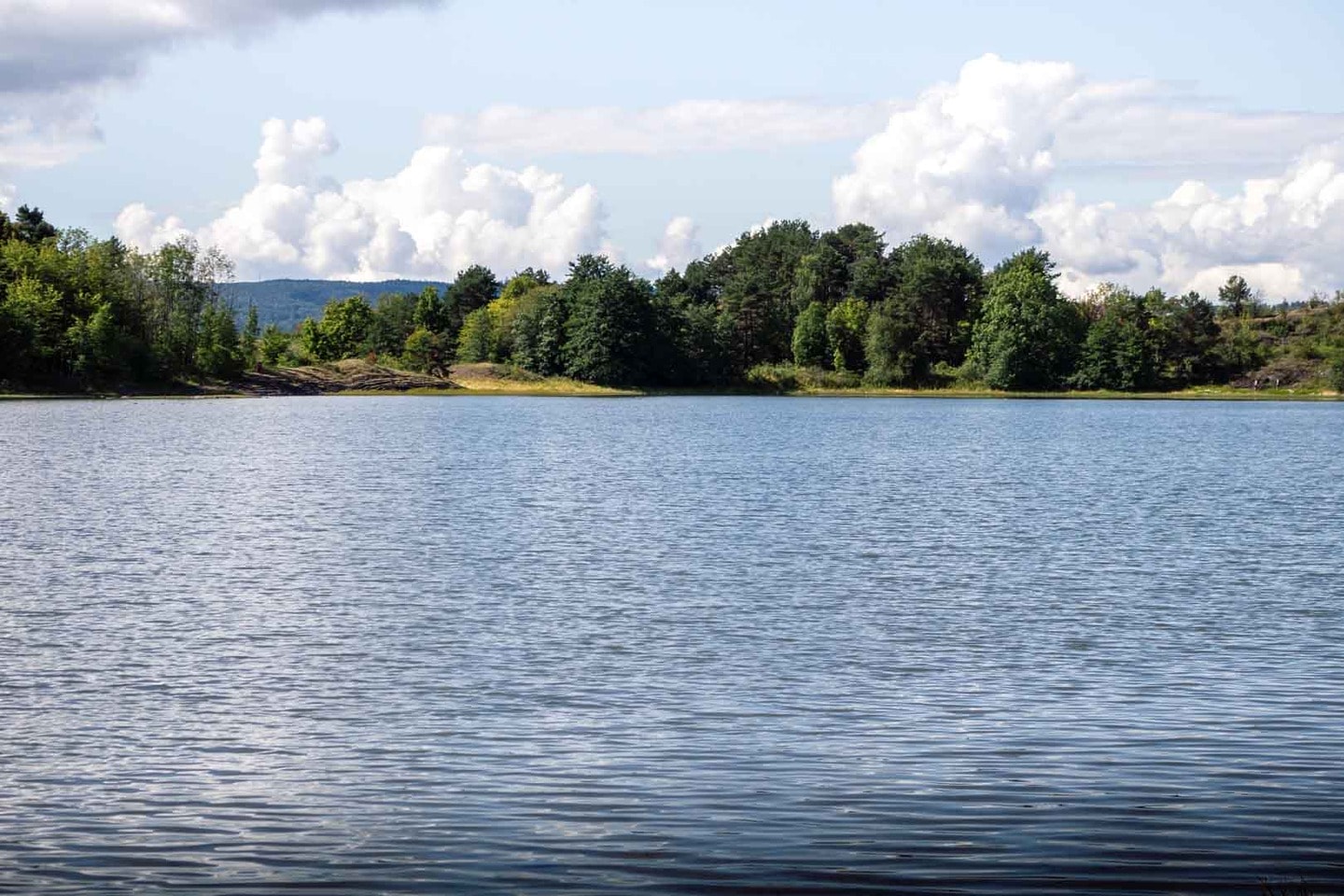
When you visit the Oslo Fjord, you can expect to see a lot of locals in and around the water. The area is loaded with picturesque swimming spots, so it would be rude not to join in.
When it comes to swimming at the fjord, we recommend visiting Gressholmen. On Gressholmen, there are small changing facilities and a handful of entry points into the water.
We went in the water at Gressholmen and it was amazing. However, we did visit in July, so the water wasn’t too cold. We certainly don’t recommend going in the sea during winter (brrr).
Other popular swimming spots in the Oslo Fjord include Nakholmen and Hovedøya beach.
3. Rent a kayak or go on a tour

No Oslo Fjord day trip is complete without some form of adventure and there’s no better way to explore than on a boat tour. We went on this Oslo Fjord Sightseeing Cruise By Sailing Ship and we can’t recommend it enough!
This Oslo cruise will see you travel the fjord in style on an authentic sailing ship called Helena. You’ll pass through the maze of islands and explore vibrant bays. Attractions you’ll pass by include Hovedøya, The Dyna Lighthouse, and the Oslo Opera House.
For something different, hire a kayak instead. Mad Dogs rents out kayaks from two locations in the central Oslo waterfront. You won’t be able to cover as much ground, but you’ll have a lot of fun.
4. Hike along some of the trails
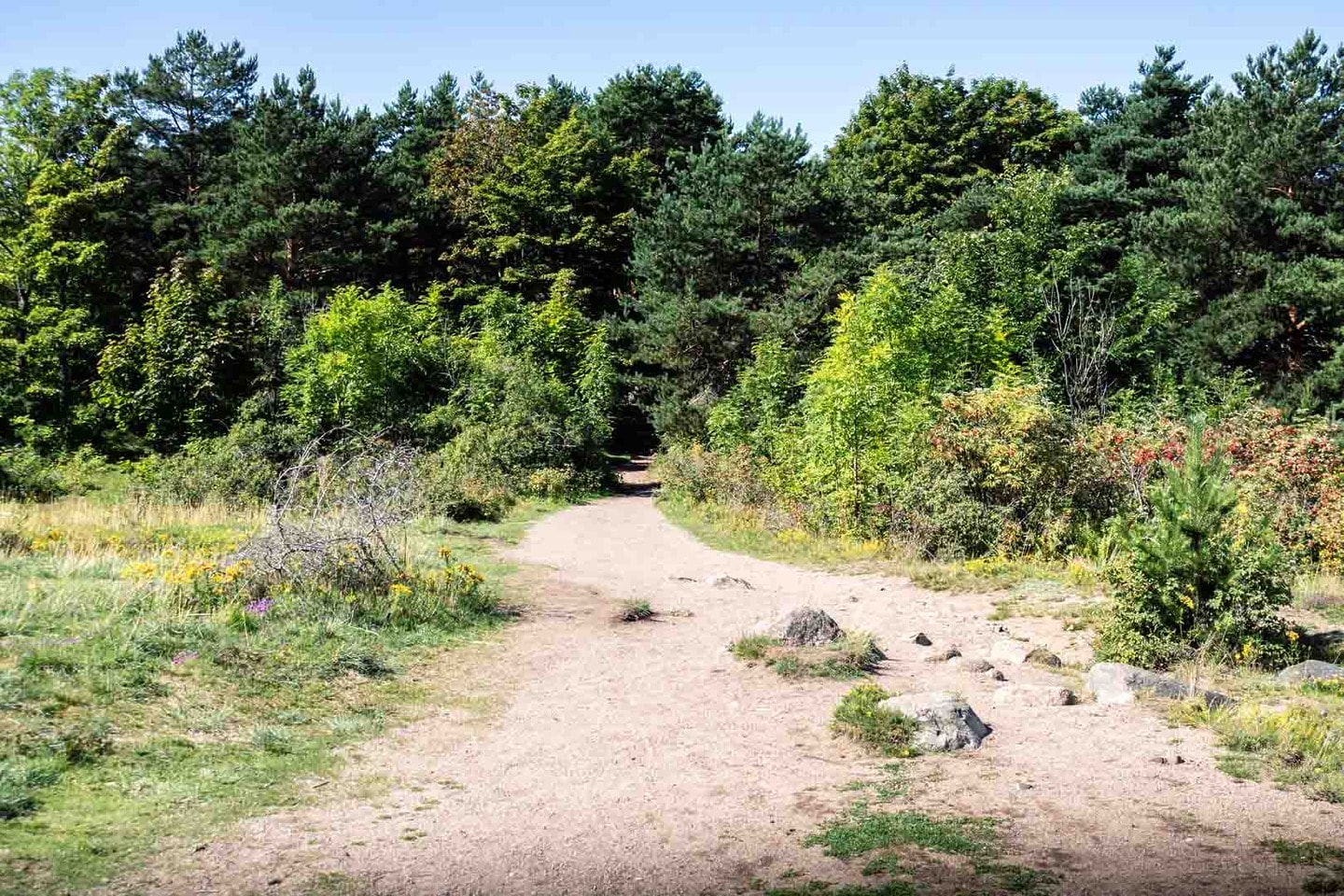
One of our favourite things about the Oslofjorden is the huge variety of hiking trails there are to explore. Generally, it doesn’t matter which island you visit, you’ll find a scenic hiking trail worth checking out.
Having said that, some islands are better for hiking than others. In our opinion, Gressholmen and Hovedøya have the best trails!
Gressholmen is the best island for scenic nature trails, with the Gressholmen, Rambergøya and Heggholmen Loop (4.8 kilometre/3-mile) being a great choice. Meanwhile, Hovedøya has a wide variety of hiking trails that include famous attractions.
The main path on Hovedøya is the best one to follow if you want to visit the island’s main attractions.
5. Explore traditional Norwegian villages

You simply have to add traditional Norwegian villages to your Oslo Fjord day trip itinerary. Most of the villages on the fjord were developed by wealthy Norwegian families as holiday homes.
Today, most of the houses on the islands are still owned by ancestors of the original owners, making them highly sought after. The villages are still used as holiday homes and they still have their original appearance.
Interestingly, by law, the houses in the Fjord have to be green, yellow, red, or blue. Most villages can be accessed by the Oslo Fjord ferry, so simply jump off at the villages you want to explore and have a walk around.
We recommend visiting the villages of Nakholmen and Lindøya.
6. Look out for birdlife
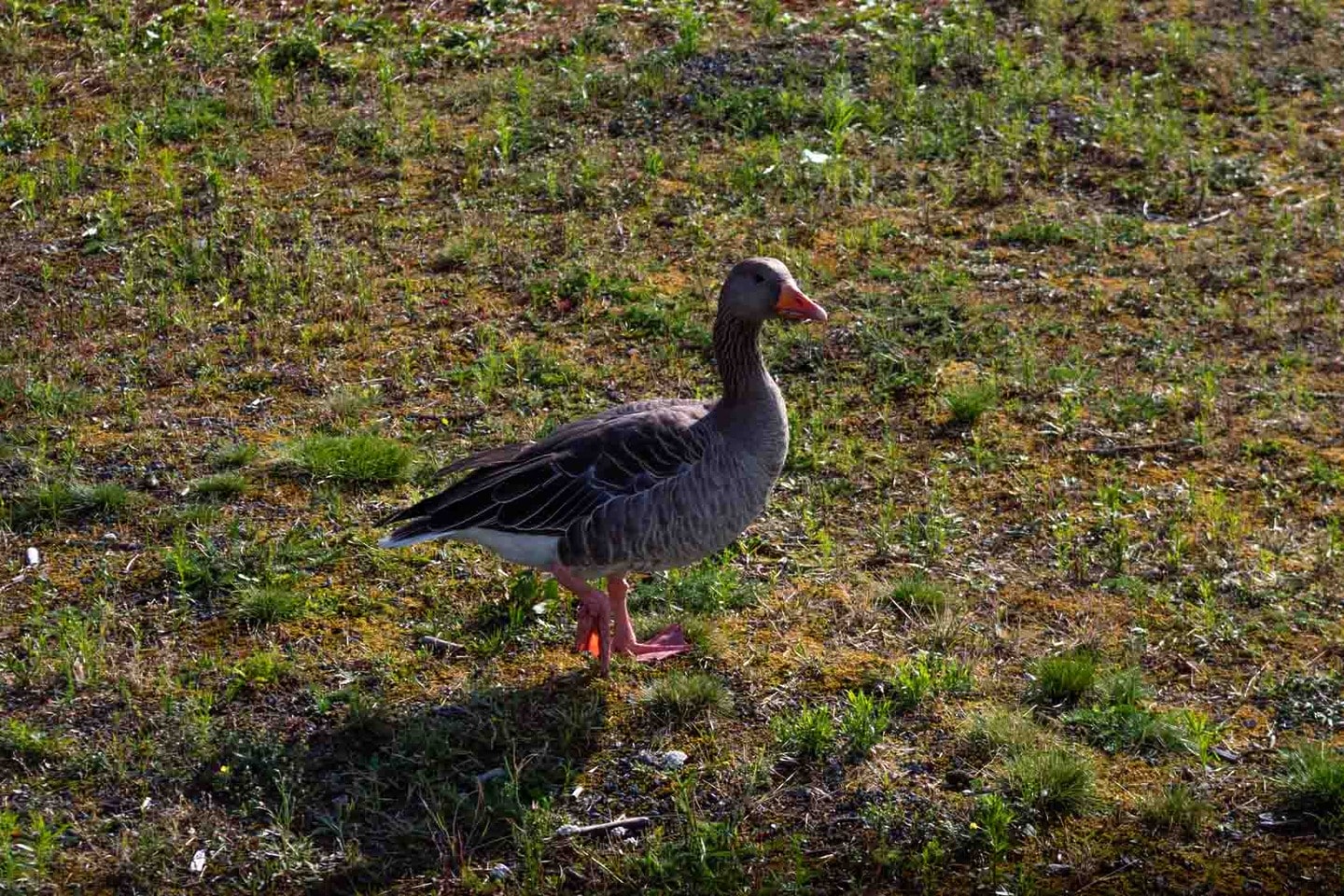
We didn’t realise it when we arrived in Oslo, but the fjord is actually a fantastic place to bird watch. Birdlife can be found all over the fjord throughout the year.
However, many birds use the Oslo Fjord when migrating in spring, so May is the best month for birdwatching. Around May, in Brentetangen, skuas, loons, and geese can be seen all day.
Between August and November is also a good time to look out for birds. During this time of year, storm birds and shearwaters visit the fjord!
Other species of birds to keep an eye out for include the Sabine’s Gull, Common Scoter, and White-billed Diver.
7. Relax on a beach
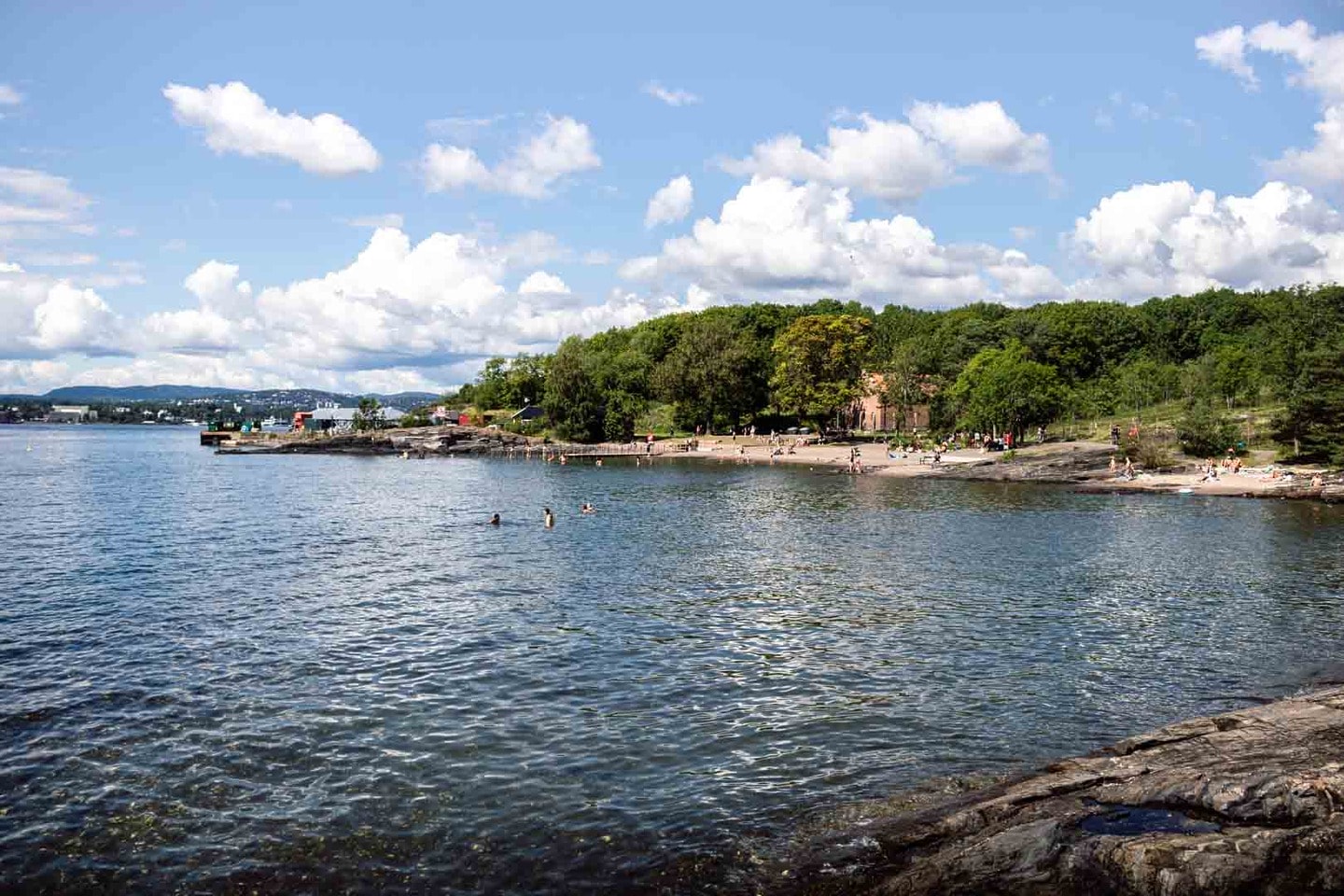
After having a good walk around the islands, kick back at a beach for a few hours. Alternatively, if you have more time in Oslo, you could spend a whole day beach hopping.
Despite the vast collection of islands that make up the Oslo Fjord, there aren’t too many beaches. However, the beaches that the fjord does have are well worth visiting. For a tranquil beach day, we recommend visiting Langøyene.
This island features a small golden-sand beach perfect for sunbathing and swimming. This beach also has a toilet block and BBQ area. Our other recommendation is the beach on Hovedøya island.
This beach is much bigger and it has more amenities. Here, you’ll find toilets, a cafe, and designated BBQ areas.
8. Camp overnight in the Oslo Fjord
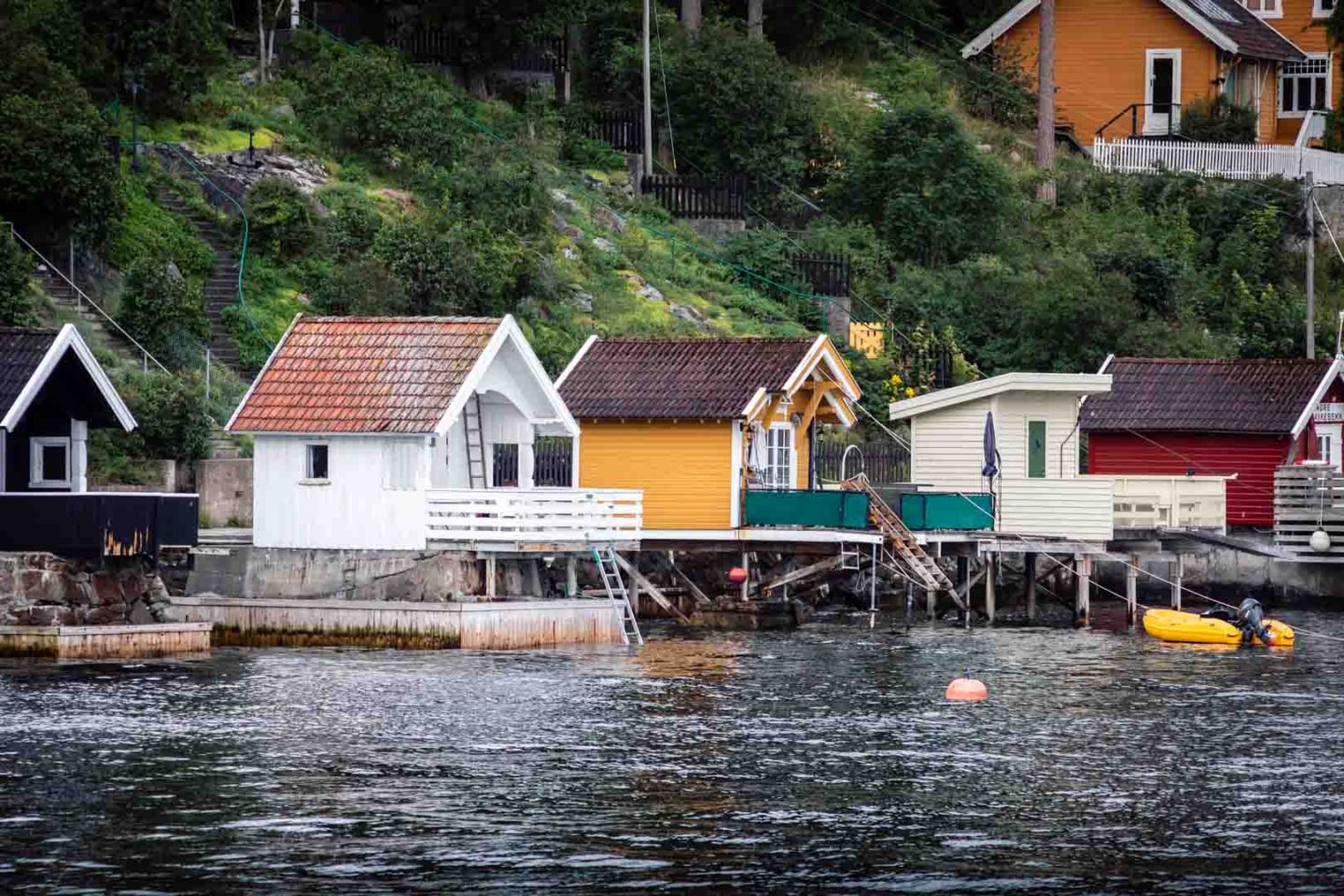
Did you know, you can camp on the Oslo Fjord? Well, you can, and to top things off, it’s completely free.
Only one island permits camping, and that island is Langøyene. On Langøyene, travellers can camp for a maximum of two days at a time.
This island is the perfect place to kick back and relax in the sun for a couple of days. However, there are rules to follow!
For example, camping is only permitted on the north side of the island and you can’t light fires. Making noise after 11 pm amongst other things is also prohibited.
Facilities on the island include a toilet, shower block and BBQ area.
Where to Stay in Oslo
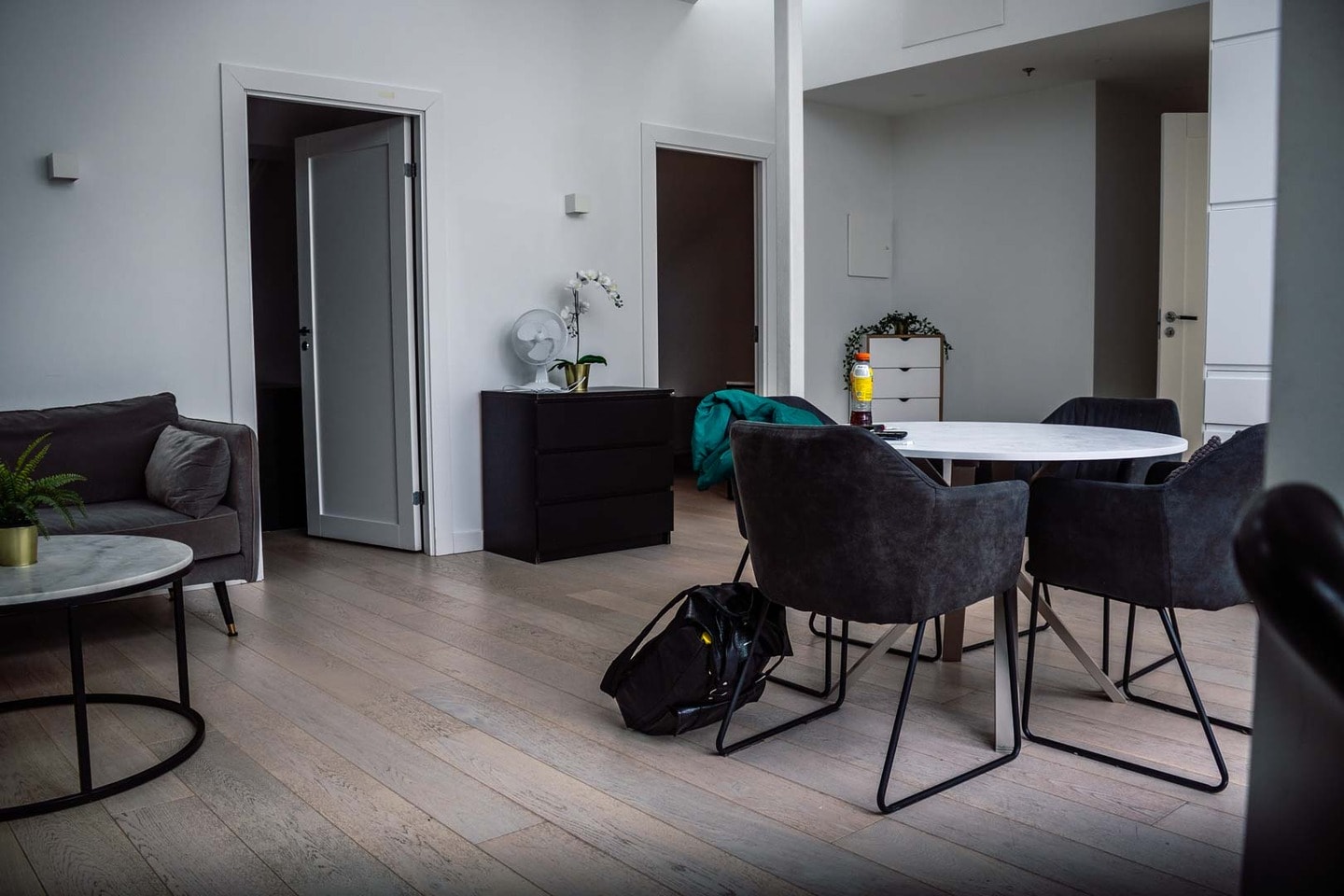
If you’re heading on a day trip around the fjord, then you’ll be staying in Oslo for at least a day or two. There are tons of fantastic accommodation options in the city, but beware, prices can be very expensive. Instead, we opted for an Airbnb (which we’ll link below) as this worked out to be more cost-effective.
Here are some of our accommodation recommendations:
Budget: Citybox Oslo
Citybox Oslo is one of the most affordable options in the city and is just a short walk from Oslo Central Station. On-site, there are simple amenities including a microwave and vending machines.
Although the rooms here are small, they feature a private bathroom, free WiFi, a work desk, and a chair. There are also family rooms available which sleep up to 4 people.
Mid-range: Hotell Bondeheimen
Hotell Bondeheimen is another fantastic option! It’s in a great location for exploring Oslo, as you’ll be close to several attractions including the National Gallery, Karl Johans Gate, and the Opera House.
The rooms here are more spacious compared to Citybox Oslo and you’ll have breakfast included. There’s also a restaurant on-site where you can try traditional food such as cod and potato dumplings.
Luxury: Hotel Continental
For a more luxurious option, check out Hotel Continental. This 5* hotel is just a short walk from the main street and offers gorgeous suites, some of which feature a private balcony and city views.
There are excellent facilities at this hotel including a 24-hour fitness centre, lobby lounge, and several restaurants. One of these is Theatercaféen which has been around for over 100 years.
Airbnb: Urban Apartments Grünerløkka Loft
This gorgeous 2-bedroom apartment sleeps up to four people. Boasting a spacious living area, kitchen, large bathroom, and outdoor patio area, this Airbnb has everything you could need.
Urban Apartments Grünerløkka Loft has been newly renovated and is in a superb location. There are some great stops and restaurants nearby, as well as ample public transport links.
Frequently Asked Questions About an Oslo Fjord Day Trip
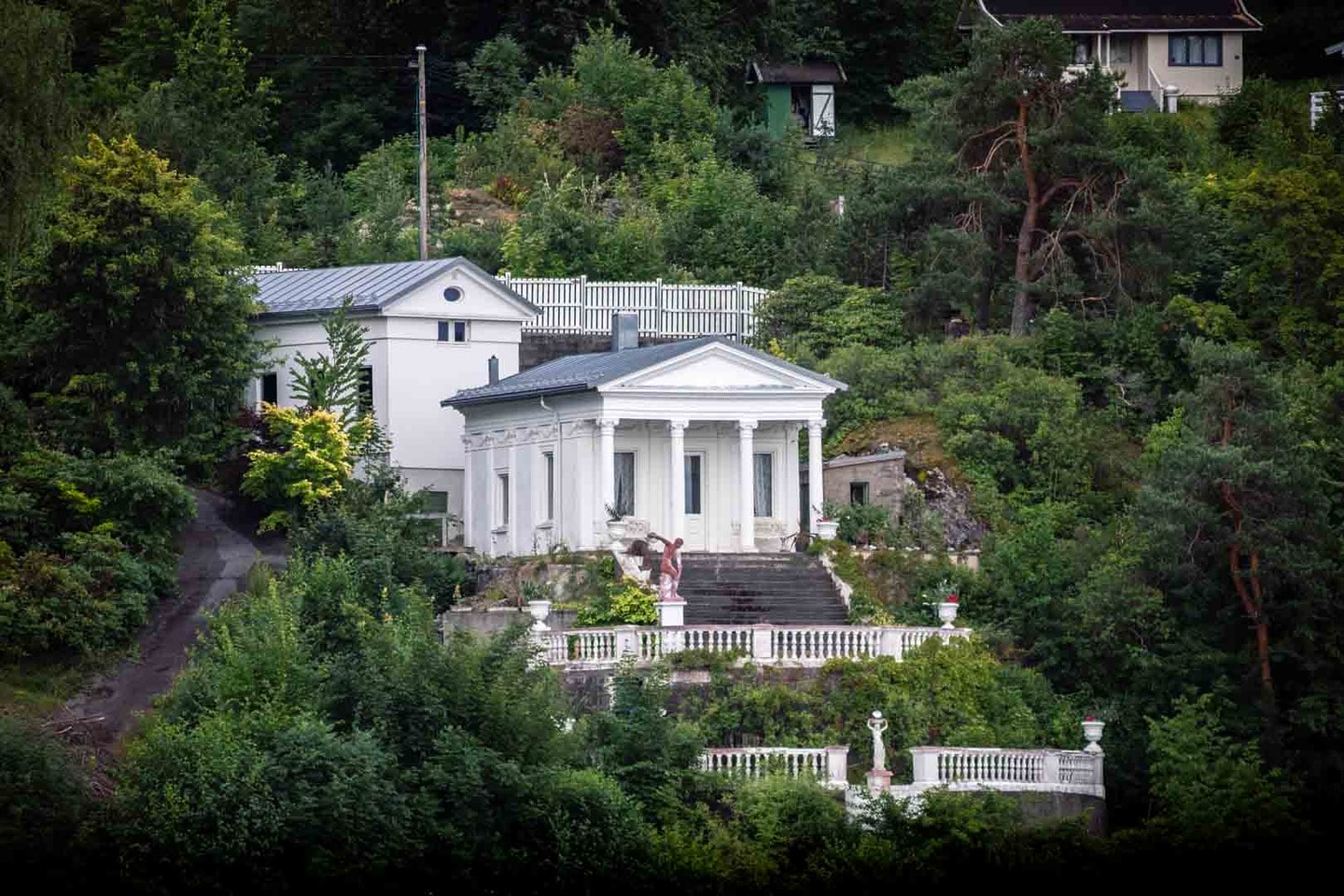
When is the best time to go on an Oslo Fjord trip?
June to August is the best time to go on an Oslo Fjord trip. Prices will be a bit higher but your overall experience will be much better!
Between June and August, days are warmer and longer, ferries are more frequent, and there are more opportunities to swim in the sea, and camp overnight on Langøyene.
How much does an Oslo Fjord Day trip Cost?
The cost will differ depending on whether you head out on a cruise or explore the fjord independently. Cruises offer the most convenience if you’re short of time and prices typically start from £30 per person.
If you choose to explore on your own, then you only need to spend £9 for your ferry ticket. You can save money by packing a picnic and taking part in free activities, making it a great activity for budget travellers.
Is the Oslo Fjord cruise worth it?
Yes, fjord cruises from Oslo are absolutely worth it. An Oslo Fjord cruise allows you to explore more of the fjord in a shorter space of time, and they usually include a guide who will tell you more about the area.
We went on a fjord tour and it was a magical experience. We got to see the most popular attractions and learn a lot about the fjord’s history.
Is it cold on a Fjords day trip?
Generally speaking, an Oslo Fjord trip isn’t cold. In summer, temperatures usually rise to 16°C (60.8°F), so it will probably feel quite warm throughout the day.
In winter, temperatures do drop to lows of 4°C (39.2°F), so you might feel chilly, but the colder weather is easily combated with a warm coat and scarf.
Final Thoughts on Taking an Oslo Fjord Day Trip
Exploring the Oslo Fjord is a must for any trip to the Norwegian capital. The natural beauty of this area will take your breath away, and there’s so much to do (as well as several islands to visit).
For the best Oslo fjord day trip, we highly recommend exploring independently. You’ll have the whole day to visit various islands and you’ll only need to pay for the ferry. Alternatively, you can opt for a sightseeing cruise if you’re short of time.
If you have further questions about an Oslo Fjord trip then don’t hesitate to contact us via Instagram, Facebook, or in the comments below!
Here are some other guides that you may find helpful:
PIN IT FOR LATER!
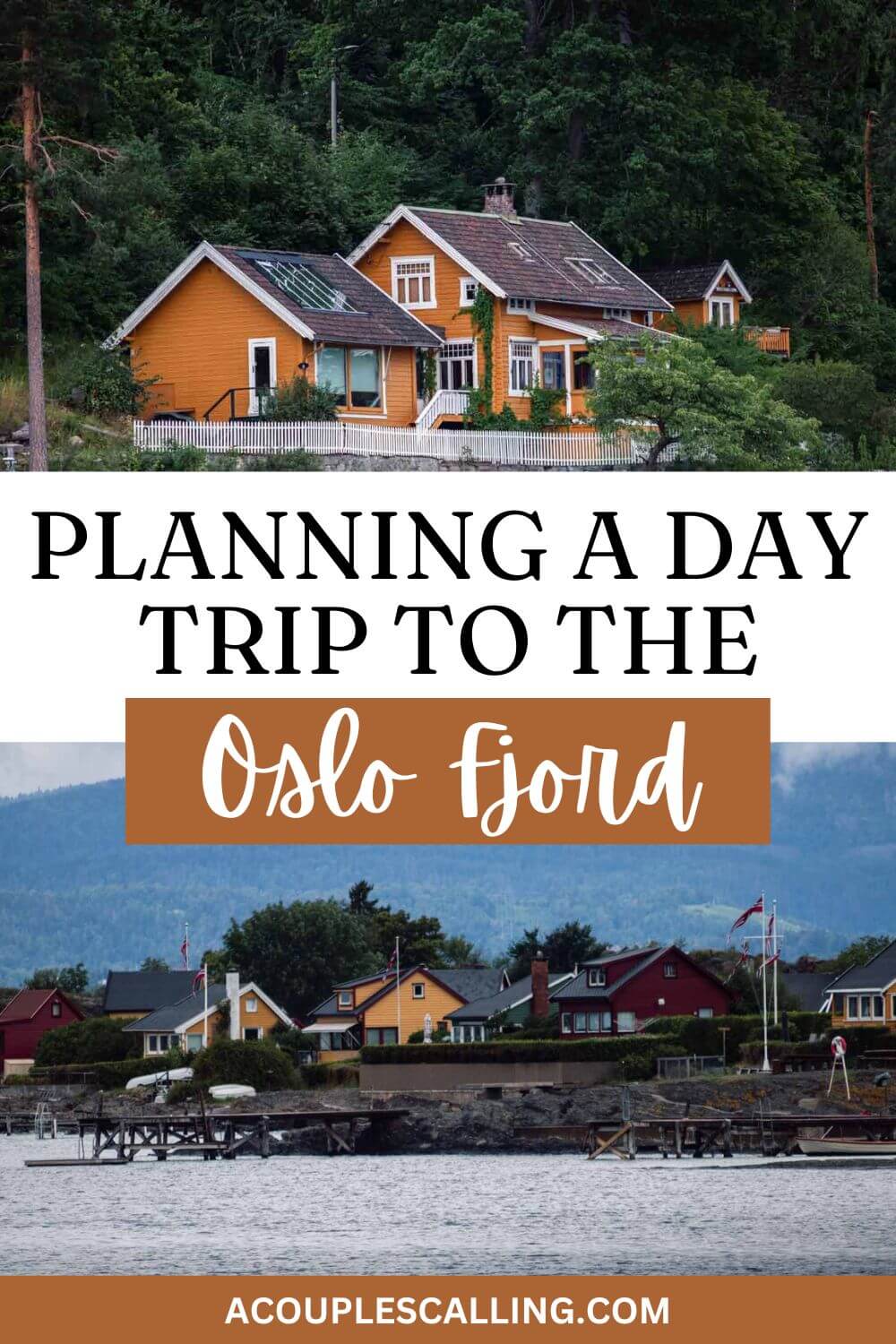
I’m one half of Acouplescalling. I'm passionate about all things travel and photography and I love sharing my experiences with others. I've seen a lot of the world already and I want to help as many people as I can do the same thing!

